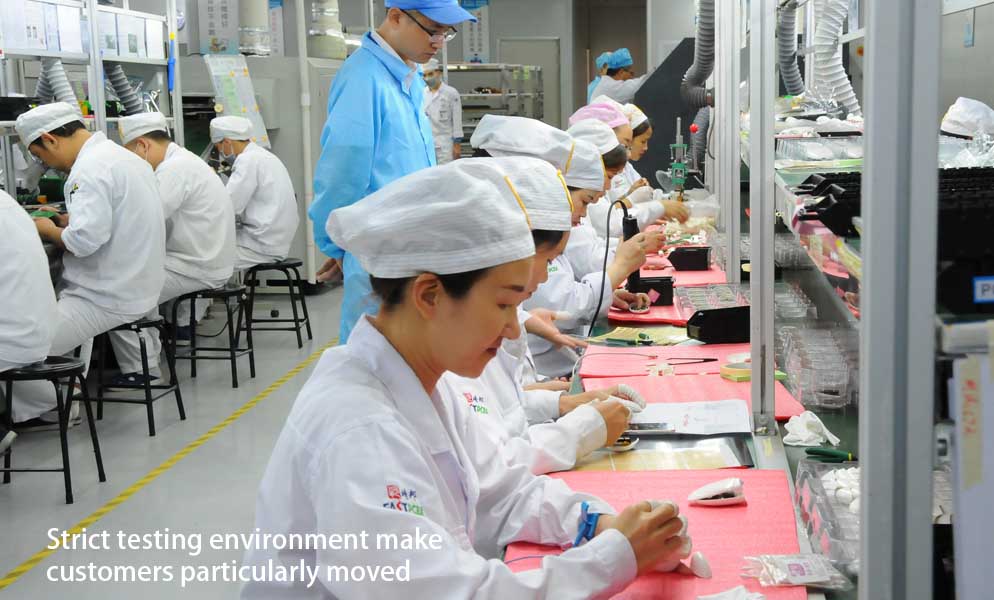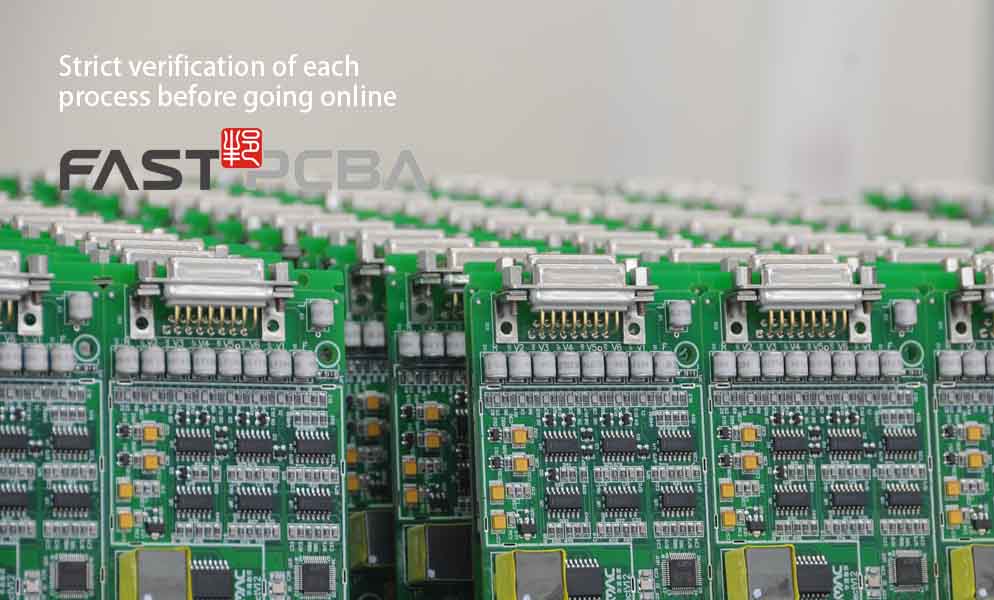About us
FASTPCBA Co.,Ltd
-
 Building 1, Senyang Electronic Technology Park, Guangming High-tech Park, Yutang Street, Guangming District, Shenzhen City.
Building 1, Senyang Electronic Technology Park, Guangming High-tech Park, Yutang Street, Guangming District, Shenzhen City.
-
 F:86-13418481618
F:86-13418481618
-
 pcba13@fastpcba.cn
pcba13@fastpcba.cn
 date:2019-11-07 15:34:43
date:2019-11-07 15:34:43
Printed circuit board reliability affecting factor
Printed circuit board reliability depends on three aspects:
1. Design - poor design buried inherent reliability issues;
2. Manufacturing - solder joint integrity and microstructure (influencing factors during manufacturing);
3. Use - application environmental stress (deterioration factor in use)

1. Common design problems
The failure mode of the solder joint is mainly the high and low temperature cycle fatigue failure caused by the working environment or power. The common printed circuit board poor designing include.
1.1 Insufficient solder joint strength. For example, the surface mount crystal oscillator There is large difference in thermal expansion coefficient between the package and the PCB material. If the package size is large, the strain amplitude under the temperature cycling condition is relatively large, and it is easy to fail in advance. Solder joint fatigue cracking at the initial stage of crystal temperature cycle test
1.2 Solder joints have continuous tensile stress. Early solder joint failures often belongs to this category. In product design, in some cases, solder joints are subjected to tensile stress, which is extremely not resistant to temperature cyclic stress. Failure will occur during 1/3 of the product's life. Summary: As long as the solder joint is subjected to tensile stress, it is easy to fatigue failure.
The solder joints in the work are subject to overstressing. There are many situations. The most common one is the connector of the external plug, which will cause the solder joint to break due to frequent insert and pull out. For example, if the button printed circuit board, if the product design is not well supported. Long-term compression will cause the product to fail. For these situations, the product design must be considered. If necessary, manual soldering is sometimes used to make the solder joints strong enough.
2. Manufacturing affecting factors
Solder joint integrity and microstructure depend on solder joint design, solder alloy composition and process conditions. These determine the initial failure and life of the solder joint.
2.1, welding process conditions
2.1.1 Heating rate: uniformity of temperature.
2.1.2 Preheating temperature and time: the activity of the flux and the uniformity of the substrate temperature.

(1) Peek temperature and holding time: solder wettability and interface formation.
(2) Cooling rate: solder solidification, initial structure of the solder joint.
Other factors include reflow soldering atmosphere, heating means, direction and strength of the airflow, etc. These factors will also have a greater impact on the soldering process. By combining the above factors, reliable solder joints can be obtained with appropriate parameters, and any unsuitable parameters will directly lead to a decrease in the reliability of the printed circuit board.
3. Solder joint interface organization
Summarizes the factors that cause reliability degradation in the solder joint interface
(1) The interface metal compound layer formed in the soldering actually reduces the reliability of the solder joint, which is often not understood. There should be no intermetallic compound (IMC) in the ideal solder joint because the intermetallic compound has a different Young's modulus and thermal expansion ratio between the substrate and the part, and the intermetallic compound is usually brittle and hard, so only in the soldering point cooling process, there is a possibility of uneven shrinkage resulting in deformation or even cracking. The damage in the solder joint strength test often occurs near the interface. This is caused by the interfacial intermetallic compound. Once the compound is formed, it is difficult to obtain a bonding interface with strong bonding force.
On the other hand, if the metal interface compound is not visible, there may be surface contamination or poor wetting due to oxidation. Therefore, intermetallic compounds are also used as indicators for determining the formation of the interface. The best solder joint condition should be that the intermetallic compound is just in the state that can be observed, as long as it can be seen, the thinner the better.
(1) Solder and electrode sometimes get caught in foreign matter and bubbles during the wetting process, which directly leads to a decrease in the strength and internal strength of the printed circuit board solder joint.
(2) If the peak temperature of the solder is too high and the solder melting time is too long, the interface reaction may occur and the intermetallic compound may grow and form voids. This is due to elemental segregation in the weld, which forms the Kirkendall effect. The formation of voids has an effect on the strength of the interface, so the management of the temperature profile is also very important.
(3) The electrode may also be deteriorated before soldering, such as a black disk phenomenon.
(4) Defects may be introduced during solder joint solidification, such as solder joint peeling, solidification cracking, formation of hard and brittle intermetallic compounds, etc. Factors affecting the formation of these solidification defects and management items include solder alloy elements, coating composition, component and substrate design, Cooling conditions, etc., need to be carefully selected.

14.2.3 Deterioration factors in use
The soldered substrate is assembled and put into practical use. The types of alloys for soldering is tens of thousands, and the working environment is also very different. Although each printed circuit board must guarantee its reliability, there are different design benchmarks for different products.
General household appliances, such as TVs, refrigerators, air conditioners, washing machines, etc., the substrate temperature is not too low, in the range of 0-60 °C.
The defects that occur during actual use are:
(1) Deterioration under high temperature conditions, which is the result of the interfacial reaction.
(2) Creep.
(3) Mechanical fatigue and temperature cycling
(4) Deterioration in high humidity environments, such as corrosion and ion migration.
(5) Tin whiskers
 Building 1, Senyang Electronic Technology Park, Guangming High-tech Park, Yutang Street, Guangming District, Shenzhen City.
Building 1, Senyang Electronic Technology Park, Guangming High-tech Park, Yutang Street, Guangming District, Shenzhen City.
 F:86-13418481618
F:86-13418481618
 pcba13@fastpcba.cn
pcba13@fastpcba.cn